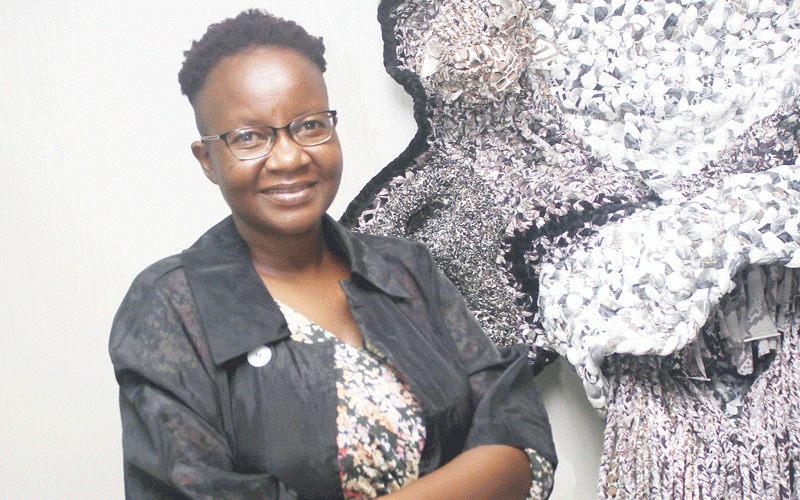
CLIMATE justice, the current buzzword of sustainable development, is a key feature and component of environmental justice. Therefore, in the human rights framework, there are numerous untold stories impacting on people’s lives and the environment, pointing towards the manipulation of global climate justice issues.
Although issues bordering on climate justice are easier to talk about, it has not been easy to walk the talk individually, nationally and internationally. This has resulted in climate justice becoming a somewhat simple, but complex and urgent phenomenon, with many cross-cutting and interwoven threads. Therefore, due to the obtaining interconnectedness one would always question whether there was ever any justice in climate justice.
Many questions arise when such climate justice issues as human rights are twisted to mean what the global powers want, especially when commitment to human rights has been gradually eroded. Although environmental and climate justice appear the same, it is in the best interest of this discussion to define the two.
Generally, environmental justice is when all people are entitled to equal environmental protection regardless of race, colour or origin. Furthermore, environmental justice borders on the right to live, work and play in a desired, conducive and clean environment. This refers to a safer world and space to realise the essential benefits and best practices of the natural environment.
The United States’ Environmental Protection Agency (EPA), describes environmental justice as: “The fair treatment and meaningful involvement of all people regardless of race, colour, national origin or income, with respect to the development, implementation and enforcement of environmental laws, regulations and policies.” In this regard, fair treatment means equity, while meaningful involvement means inclusiveness but these two pillars of fair treatment and meaningful involvement have been problematic to realise. Since time immemorial, the world has been fighting for equity and inclusivity.
There are some communities that have not been treated fairly ever since, while others have been left out of important programmes and their voices have ceased to be heard. Climate justice also includes gender justice, energy justice, financial justice, capacity building justice and decolonising language of communicating climate justice issues, among others.
Climate justice is generally viewed as that which is right, fair, appropriate or deserved, with justice being achieved when unjust acts are redressed. In the context of this assertion, the world is in its current deplorable state — sick, polluted, degraded and deforested, due to the failure by the global powers to redress unjust acts. In this regard, unjust environmental acts continue to be committed in the Amazon forests, Congo rainforest, Indonesia and many parts of the world.
According to the Mary Robinson Foundation: “Climate justice links human rights and development to achieve a human-centred approach, safeguarding the rights of the most vulnerable and sharing the burden and benefits of climate change and its resolution equitably and fairly.”
- Placement of climate justice in the overall climate change discourse
- Climate and environmental justice as human rights tools
- Litigation, a new frontier for climate justice
- The “haves” and “have-nots” in climate justice
Keep Reading
Generally, climate justice means trying to ensure that people and the planet are treated in ways which enable them to reduce further climate changes, through mitigation pathways and also adapting to changes that have been brought about in the environment, through adopting drought tolerant crops, conserving water and harvesting it to fight poor rainfall patterns and droughts, among others.
The United Nations Framework Convention on Climate Change views climate justice as likely going to be achieved if and when the industrialised countries are able to slow down their carbon emissions, compensate developing countries for the carbon sins they have committed and realise green growth. This includes ensuring capacity building and technology transfer in order to realise clean energy transitions. This would witness vulnerable people become resilient to climate change impacts and achieve green growth strategies.
Although telling the truth in this respect, the assertion continues to sound more utopian than real, considering the slow pace in which green growth practices are being implemented around the globe especially in developing countries.
Another stumbling block militating against communities realising climate justice is the growing number of stifled voices especially from the Global South, where the vulnerable continues to be marginalised and displaced by climate change impacts. Even in the context of devastating floods, cyclones, raging fires, extreme heat, water scarcity, energy poverty, among others, voices of the marginalised have not been heard.
One wonders whether there are any human rights in the current climate justice system. The system lacks equity by sidelining the most affected and impacted by the climate change-related decisions. Even the presence of thousands of social movements articulating climate justice narratives has not been able to bring the desired results. The situation actually points to a vicious web, entangling disadvantaged communities, leaving them with no breathing space.
While climate justice has emerged as the preferred policy by the Global South, not much justice has been realised because some countries have not fully endorsed global climate justice policies. South Africa does not seem too keen to let go its investments in coal mining and burning anytime soon, while Uganda, Zimbabwe, Namibia, Botswana and Tanzania, among others are busy exploring oil, gas and coal deposits.
Around the world, there continue to be a more inhospitable environment for justice and human rights contributing to lack of climate justice leading to climate migration and refugees. Also, extreme heat, tropical storms, wildfires, floods and cyclones are devastating communities mainly in the Global South with no coping mechanisms to cushion communities from the negative impacts of climate change. These impacts have strained economies and the recovery of host countries. Food systems have not been spared, leaving relevant communities under pressure to survive.
Children need to be mainstreamed into climate change development, while their rights also need to be situated at the heart of climate justice as recipients of rights including being rights holders as well.
There are also an emerging issues of language that is used to talk about loss and damage, while climate justice needs to be decolonised so that it becomes equitable and inclusive of marginalised communities. There is also the need for climate justice to be a shared global responsibility for loss and damage, while channelling financial support to those who need it most, especially in Africa.
Conclusively, climate justice as a buzzword and climate development narrative has not done much to bring the most needed environmental justice. Otherwise we should go back to the drawing board for sustainable systems change.
- Peter Makwanya is a climate change communicator. He writes in his personal capacity and can be contacted on: petrovmoyt@gmail.com.











